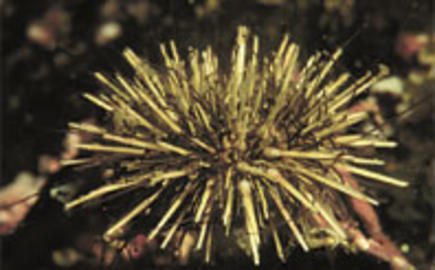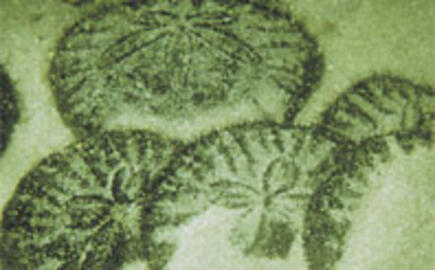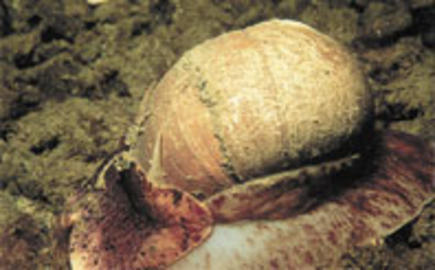
Large, round creamy-colored or pinkish shell. Soft body is translucent brown or gray. Only found in soft sediment. Lays eggs in a clay-like, round mass.

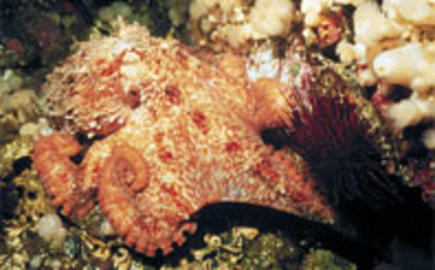
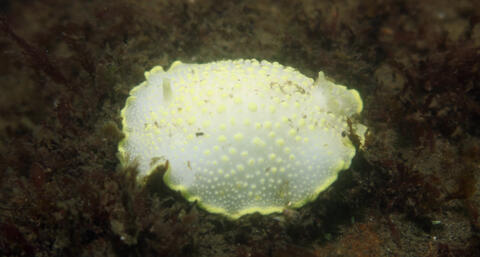
Flat body with a small, rounded tuft of gills at the back of the body. (Similar sp. Hudson’s yellow margin dorid is found only shallow subtidal depths and has larger sensory organs in the front.)
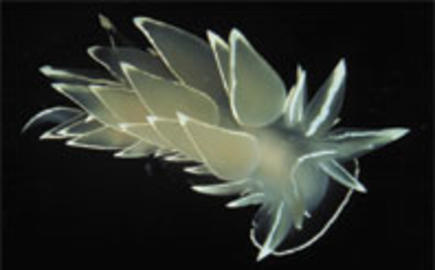
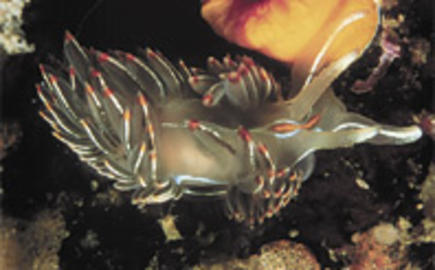
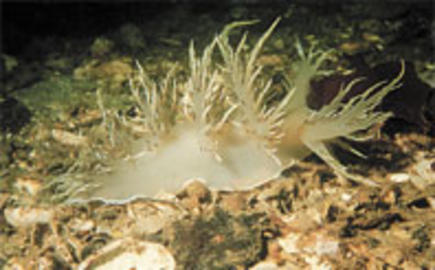
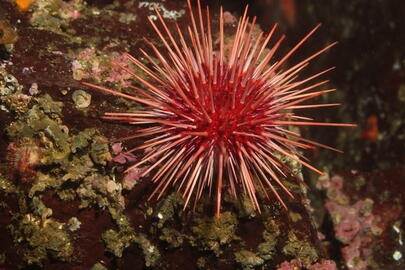
Red to purple-black. Abundant, long sharp spines.
